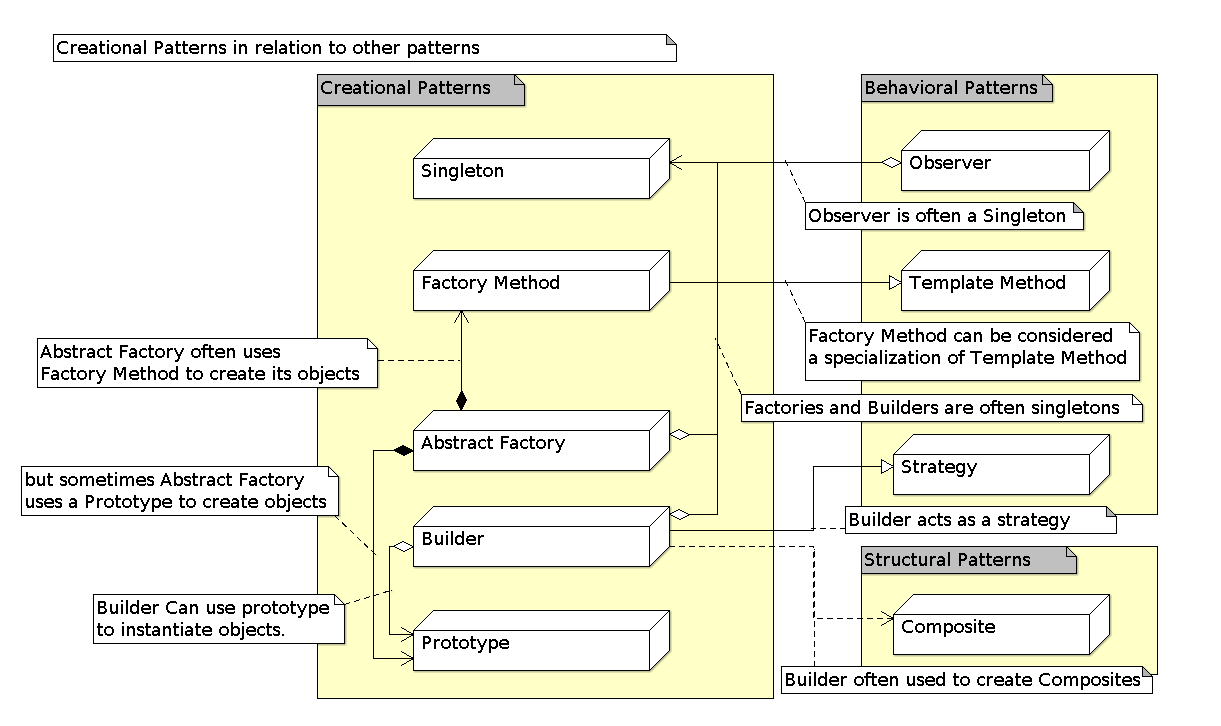Creational Design Patterns
Creational design patterns are a fundamental aspect of software engineering, aimed at simplifying the creation of objects in a object oriented system. Their primary goal is to make a system independent of how its objects are created, composed , and represented.
This article will delve into the key concepts of creational design patterns, exploring their types, advantages, applications, and examples.
Understanding Creational Design Patterns
Definition
Creational patterns are part of the larger group of design patterns used in object-oriented software development. They deal specifically with object creation mechanisms, trying to create objects in a manner suitable to the situation.
Core Principle
The basic principle of these patterns is to separate the system from how its objects are created, composed, and represented. This separation helps to reduce system complexities, and increases the flexibility and reusability of the code.
Types of Creational Design Patterns

- Singleton Pattern: Ensures that a class has only one instance, and provides a global point of access to it.
- Factory Method Pattern: Defines an interface for creating an object, but lets subclasses alter the type of objects that will be created.
- Abstract Factory Pattern: Provides an interface for creating families of related or dependent objects without specifying their concrete classes.
- Builder Pattern: Separates the construction of a complex object from its representation, allowing the same construction process to create different representations.
- Prototype Pattern: Creates new objects by copying an existing object, known as the prototype.
-
Besides the originally patterns which were popularized in Gang of Four book, there are 2 other
patterns that are used in practice:
- Simplified Factory Pattern - Implementation of factory method design patterns can be quite complex and might differ from one language to another. So a simplified version which covers some simplified factories and is more robust across different programming languanges.
- Object Pool - one of the most used design patterns, is used to manage the creation and reuse of objects, particularly resource-intensive objects, to manage and reduce the overhead associated with object creation, destruction, and garbage collection.
Advantages of Creational Design Patterns
- Flexibility: They provide more flexibility in deciding which objects need to be created for a given case.
- Reusability: Promotes the reuse of existing code, reducing redundancy and errors.
- Decoupling: Objects are created independently of the class implementations, leading to fewer dependencies and tighter encapsulation.
Applications, Examples and Eeal Life Examples
-
Creational design patterns are used in many situations. Here are a few scenatios where
creational design patterns are used in real world applications:
- Singleton in Logging: Widely used in logging frameworks, where a single logger instance is shared across a system.
- Factory Method in UI Libraries: UI libraries often use this pattern to manage the creation of UI elements that can have different appearances and behaviors depending on the context.
- Abstract Factory in Cross-Platform Apps: Useful in developing applications that need to run on multiple platforms, where different object families represent UI elements for each platform.
- Builder in Complex Object Creation: Employed when creating complex objects, like constructing a complex Graphical User Interface (GUI).
- Prototype in Object Cloning: Used in scenarios where object cloning is preferable over creation, like in a gaming environment where multiple similar objects are required.